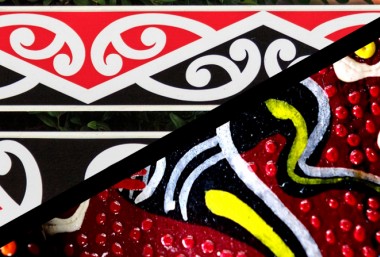You don’t need to look far to see the misappropriation of indigenous knowledge, customs and culture, in Australia, New Zealand and overseas.
Eight years ago, a tobacco company sold cigarettes in Israel featuring a Māori design and a map of New Zealand on the packet. In 2016, an Auckland brewery produced beers with labelling depicting Māori ancestral legends.
Then this year, there were more calls for protection of the haka Ka Mate ahead of the Rugby World Cup in Japan, following instances such as Heineken’s promotional video displaying amateur performances of Ka Mate.
Australia’s major review Indigenous Knowledge: Issues for protection and management states that hundreds of different Aboriginal and Torres Strait Islander clans and communities have developed complex systems of understanding and passing on their intangible heritage assets. However, in the 230 years since colonisation, there has been a large scale dismantling of these systems.
For example, traditional artists have faced works mass produced overseas being sold in Australia as traditional Aboriginal designs.
Many strategies have been implemented in an attempt to protect and manage indigenous knowledge, here in New Zealand, Australia, and globally. Yet in many cases, they aren’t effective or relevant, and a more comprehensive approach is required.
One of the key issues that needs to be resolved with our current Anglo-American intellectual property (IP) system is that it has a different value base to the values that underpin how indigenous people protect their knowledge. The current IP system is set up to reward innovation and commercial endeavour, and copyright has a limited duration.
In the case of Māori and most indigenous peoples around the world, importance is placed on maintaining kaitiaki (guardian, custodian) relationships with indigenous knowledge, and protecting indigenous knowledge, flora, fauna, land and the environment for future generations.
These responsibilities are enduring and don’t expire, and the next generation will carry this burden.
The Australian and New Zealand Governments are both tackling the complex issue of how to protect indigenous knowledge at the same time.
New Zealand’s review is part of the broader Copyright Act review, and centres on some of the findings of the Waitangi Tribunal’s Wai 262 inquiry (Wai 262 was a major claim to the Waitangi Tribunal from six tribes, encompassing everything from IP rights to management of indigenous fauna).
The tribunal found the existing copyright regime didn’t provide adequate protections for Māori rights, interests in taonga works and Mātauranga Māori. It recommended that the Crown establish a new unique regime to provide new protections.
The New Zealand Government is currently reviewing submissions about how to coordinate the Copyright Act review with policy development in response to the Wai 262 report.
Meanwhile, the Australian Government’s major paper Indigenous Knowledge: Issues for protection and management explores the relationship between tradition-based knowledge of Aboriginal and Torres Strait Islander peoples and issues of IP, cultural heritage and economic empowerment, and is reviewing submissions on its findings.
Interestingly, while the issues of how best to protect indigenous knowledge are the same, Australia and New Zealand have taken vastly different approaches.
Australia is taking the lead, as its review was comprehensive, wide-ranging and holistic and really sought to understand the nature of indigenous knowledge. Australia conceded there was limited data and understanding about the economic value of indigenous knowledge.
The Australian review found that there were major challenges with the fundamental principle of ‘free prior and informed consent’ and how indigenous people participate in decisions that affect them. Indigenous consultation and consent efforts were fragmented, ad hoc and implemented on a case-by-case basis.
The paper recommended a large suite of options to address these issues in a comprehensive way, including education campaigns on the harms of cultural misappropriation, establishing an indigenous advisory committee, and developing and promoting protocols for the use of indigenous languages, words and names – to name a few.
Unfortunately, in comparison to Australia, New Zealand is reviewing this important issue of Mātauranga Maori protection in an ad-hoc, piecemeal way. The Copyright Act is being reviewed in isolation, as is the Plant Variety Rights Act, and aspects of the Patents Act.
The New Zealand approach is of value and, if put in to practice, will help protect aspects of Māori knowledge, however, it isn’t comprehensive enough. Our approaches to the management of Mātauranga Māori, natural resources and the environment, will impact the types of research that New Zealand conducts.
We must look at the end goal, and that is for Te Tiriti o Waitangi to be given proper effect across our entire innovation system in New Zealand. This will require reviews of how science, research and development is carried out in New Zealand, reviews of New Zealand’s bioprospecting and biodiversity policies, a full review of our IP laws, and consideration of what the government’s role is in relation to Mātauranga Māori.
To use the words from the Te Tauihu Ngā Taonga Tuku Iho Communique (Māori Cultural and Intellectual Property Rights Conference 2018):
The way forward must be based on a foundation of taha Māori, taha wairua, trust and leadership.




